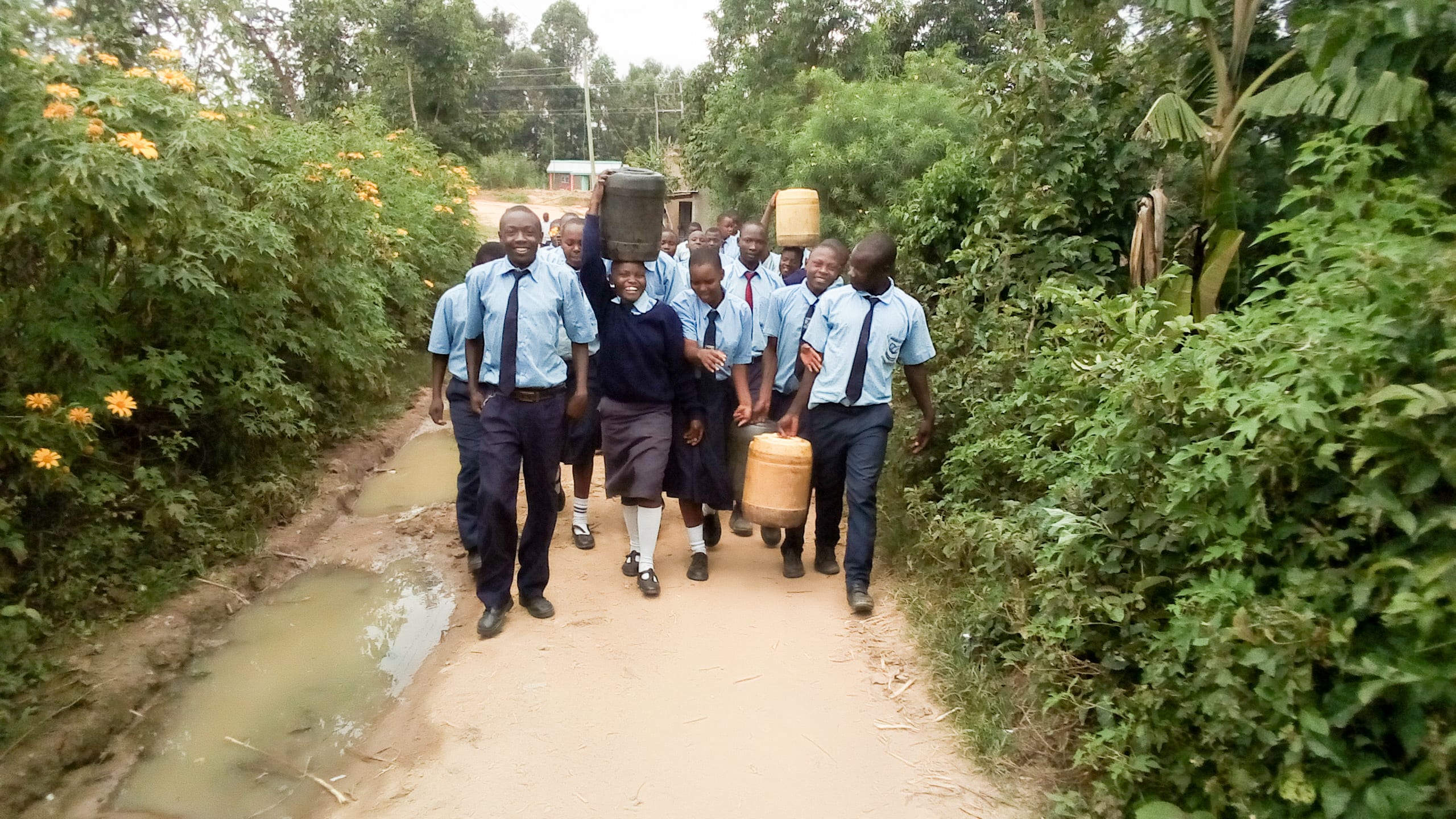Musango Secondary School was established in the year 2014 with an enrollment of 44 students. It started under the leadership of the primary school headteacher, Mr. Olacho. The school bought land in 2013 but continued to operate within the primary section until 2015 when it transferred to its own land. Four classrooms, six latrines and a semi-permanent kitchen were constructed. The school has grown to currently have 225 students.
But there has never been enough water on school grounds. "Water scarcity is one of the many challenges we face in this school," said Deputy Principal Stephen Makokha.
"At some point we have to get our students out of the classes for them to fetch water, yet lessons are going on. It wastes their time and ours too making it so hard to complete our syllabus on time."
When students need more water, they have to walk out the gate, down the road, and into the adjacent community. They frequent the community's well, where disputes often arise as community members say that they have the right to always be first in line. With two plastic tanks that don't provide adequate water, the school is in danger of being closed by the local health department.

What we can do:
Training
The school environment is fairly clean. The utensils are sun-dried on the dish rack. However, the students need to learn more about personal hygiene and how important handwashing is.
"Our hygiene is not the standard. Our students can't clean their classes and the latrines frequently as required. They don't even wash their hands after visiting the latrine simply because we don't have enough water in school and also there are no handwashing containers," said Mrs. Kisanya Mitchell.
Training on good hygiene habits will be held for two days. The facilitator will use PHAST (participatory hygiene and sanitation transformation), ABCD (asset-based community development), CTC (child to child), lectures, group discussions, and handouts to teach health topics and ways to promote good practices within the school. The CTC method will prepare students to lead other students into healthy habits, as well as kickstart a CTC club for the school.
After visiting with teachers and students, we determined to address personal hygiene; leadership and management; handwashing; water handling; water treatment.
Handwashing Stations
Both the teachers' and students' latrines do not have water placed near them for handwashing. The only available handwashing container is at the entrance of the administration block for the teachers to wash their hands.
Two handwashing stations will be delivered to the school, and the CTC club will fill them with water on a daily basis and make sure there is always a cleaning agent such as soap or ash.
VIP Latrines
There are just two latrines per gender. The latrines are not so clean. They are not washed daily because of water scarcity.
Two triple-door latrines will be constructed with local materials that the school will help gather. Three doors will serve the girls while the other three serve the boys. And with a new source of water on school grounds, students and staff should have enough to keep these new latrines clean.
Rainwater Catchment Tank
A 50,000-liter rainwater catchment tank will help alleviate the water crisis at this school. The school will also help gather the needed materials such as sand, rocks, and water from the spring for mixing cement. Once finished, this tank can begin catching rainfall that will be used by the school’s students and staff.
We and the school strongly believe that with this assistance, standards will significantly improve. These higher standards will translate to better academic performance!

 Rainwater Catchment
Rainwater Catchment
 Rehabilitation Project
Rehabilitation Project




































